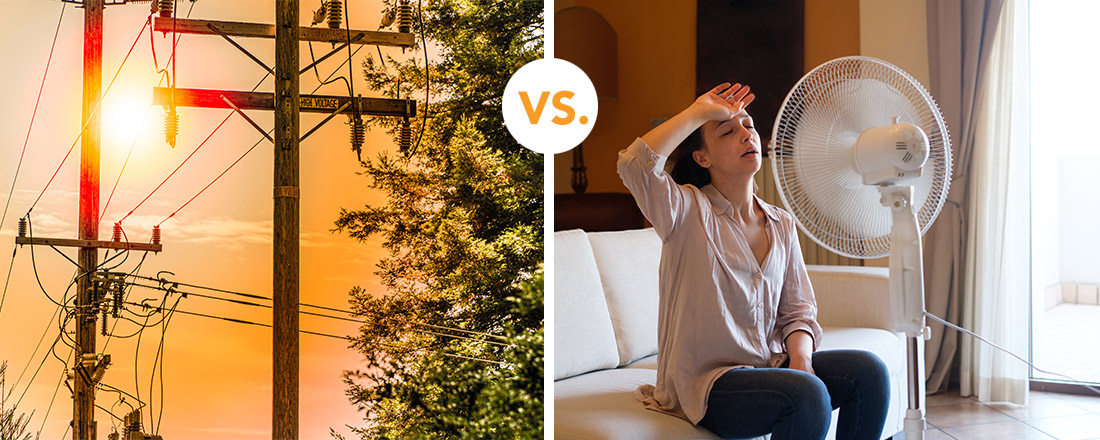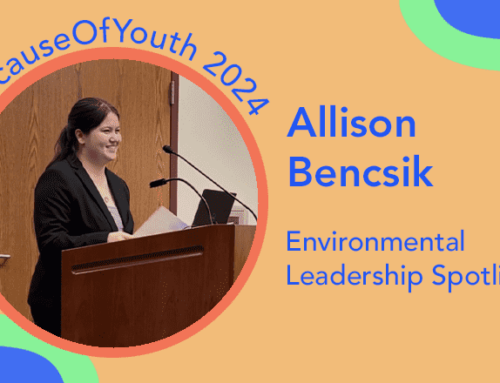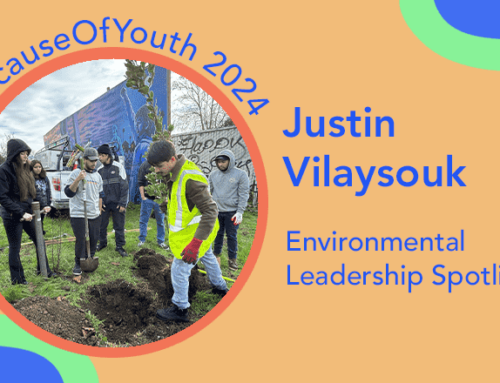Recently, Bay Area residents received notifications for both a Flex Alert and Public Safety Power Shutoff (PSPS) event at the same time. While both Flex Alerts and PSPS events are types of planned power outages that occur during extreme weather conditions, they happen for different reasons.
What is a PSPS event or a Flex Alert?
Public Safety Power Shutoff (PSPS)
Power outages that are planned in order to keep the public safe during high fire-threat conditions (such as a Red Flag Warning declared by the National Weather Service, how humidity levels, or forecasted sustained winds).
Flex Alert
Request for customers to voluntarily conserve electricity during times of high demand to help avoid or reduce the size of rotating power outages. If the demand does not decrease enough, a rotating power outage will be necessary. Some flex alerts are labeled with one of the following emergency stages:
Stage 1: strong need for electricity conservation
Stage 2: requires the California grid operator (CAISO) to order additional power plants online
Stage 3: notice issued to utilities (i.e., PG&E) for potential rotating power outages
Why do these events happen and who makes that decision?
Public Safety Power Shutoff (PSPS)
Hot, dry and windy conditions may substantially increase the risk of a wildfire. If a power line were to fall or spark under these conditions it could potentially start a fire. PG&E may decide to shut off power to reduce the risk of wildfires caused by electrical equipment.
Flex Alert
These alerts are issued by the California Independent System Operator (ISO), a nonprofit, public benefit corporation that manages the high-voltage electric grid for 80% of California, when there is not enough energy supply to meet customers’ energy demands (usage). They are usually triggered by:
- hot weather, especially persistent heatwaves, when air conditioner use drives up electricity demand
- unplanned power plant outages
- loss of transmission lines or equipment
Does conserving or reducing your energy use help to avoid an outage?
Public Safety Power Shutoff (PSPS)
No, but it can help indirectly. PSPS outages are determined by extreme weather and environmental factors, not by the amount of energy being used.
However, reducing carbon emissions can help to slow the effects of climate change, which often leads to extreme weather events. One substantial way household can reduce their carbon emissions is to reduce their energy use and to use renewable energy.
Flex Alert
Yes. Even reducing your electricity usage by a small amount during the afternoon and evening has been effective in avoiding a Flex Alert rotating outage.
Which areas are most affected?
Public Safety Power Shutoff (PSPS)
Areas deemed to be high fire-threat districts (see Tier 2 and Tier 3 on this map) are most likely to be under a PSPS watch or warning. Your power may also be shut off if your community relies on a line that runs through an area experiencing severe weather or a line within a high fire-threat area.
Flex Alert
Any area in the state can be a part of a Flex Alert outage. CAISO will typically order the state’s investor-owned utilities (e.g., PG&E) to immediately reduce the electrical load by turning off service to a portion of customers. Typically, PG&E’s website will show the areas and times the rotating outages will occur, which usually lasts one hour.
What should I do now to be prepared and where can I sign up for alerts?
Public Safety Power Shutoff (PSPS)
Check that PG&E has your current contact info to receive PSPS notifications.
If you rely on power for medical needs, enroll in the Medical Baseline program to receive extra PSPS notifications from PG&E and a discount on your monthly bill.
Flex Alert
Sign up for CAISO’s Flex Alerts.
Work on reducing your energy use during late afternoon and evening hours by taking actions such as setting your air conditioner to 78º or higher, if health permits and running major appliances before 3 p.m. Also consider turning off all unnecessary lights and devices. This will help during a Flex Alert and may help you save money on your electricity bill!
What longer-term solutions should I consider?
Public Safety Power Shutoff (PSPS)
Energy storage or backup batteries come in several cost and size options. They can be sized to power only essential devices or appliances for a couple hours or they can be large enough to power your entire house for a few days. Learn more about energy storage incentives.
Flex Alert
If you are able to shift the use of your large appliances to before 4 p.m. or after 9 p.m., you may benefit from a time-of-use rate. Time-of-use pricing is lowest from 9 p.m. to 4 p.m. (the next day).
Energy efficiency upgrades can also reduce your home’s energy usage and monthly bill.
Updated on 7/12/22, originally published on 9/11/2020.
Recently, Bay Area residents received notifications for both a Flex Alert and Public Safety Power Shutoff (PSPS) event at the same time. While both Flex Alerts and PSPS events are types of planned power outages that occur during extreme weather conditions, they happen for different reasons.
What is a PSPS event or a Flex Alert?
| Public Safety Power Shutoff (PSPS) | Flex Alert |
|---|---|
| Power outages that are planned in order to keep the public safe during high fire-threat conditions (such as a Red Flag Warning declared by the National Weather Service, how humidity levels, or forecasted sustained winds). | Request for customers to voluntarily conserve electricity during times of high demand from 4 p.m.–9 p.m. to help avoid or reduce the size of rotating power outages. If the demand does not decrease enough, a rotating power outage will be necessary. Some flex alerts are labeled with one of the following emergency stages: Stage 1: strong need for electricity conservation Stage 2: requires the California grid operator (CAISO) to order additional power plants online Stage 3: notice issued to utilities (i.e., PG&E) for potential rotating power outages |
Why do these events happen and who makes that decision?
| Public Safety Power Shutoff (PSPS) | Flex Alert |
|---|---|
| Hot, dry and windy conditions may substantially increase the risk of a wildfire. If a power line were to fall or spark under these conditions it could potentially start a fire. PG&E may decide to shut off power to reduce the risk of wildfires caused by electrical equipment. | These alerts are issued by the California Independent System Operator (ISO), a nonprofit, public benefit corporation that manages the high-voltage electric grid for 80% of California, when there is not enough energy supply to meet customers’ energy demands (usage). They are usually triggered by:
|
Does conserving or reducing your energy use help to avoid an outage?
| Public Safety Power Shutoff (PSPS) | Flex Alert |
|---|---|
| No, but it can help indirectly. PSPS outages are determined by extreme weather and environmental factors, not by the amount of energy being used. However, reducing carbon emissions can help to slow the effects of climate change, which often leads to extreme weather events. One substantial way household can reduce their carbon emissions is to reduce their energy use and to use renewable energy. | Yes. Even reducing your electricity usage by a small amount during the afternoon and evening has been effective in avoiding a Flex Alert rotating outage. |
Which areas are most affected?
| Public Safety Power Shutoff (PSPS) | Flex Alert |
|---|---|
| Areas deemed to be high fire-threat districts (see Tier 2 and Tier 3 on this map) are most likely to be under a PSPS watch or warning. Your power may also be shut off if your community relies on a line that runs through an area experiencing severe weather or a line within a high fire-threat area. | Any area in the state can be a part of a Flex Alert outage. CAISO will typically order the state’s investor-owned utilities (e.g., PG&E) to immediately reduce the electrical load by turning off service to a portion of customers. Typically, PG&E’s website will show the areas and times the rotating outages will occur, which usually lasts one hour. |
What should I do now to be prepared and where can I sign up for alerts?
| Public Safety Power Shutoff (PSPS) | Flex Alert |
|---|---|
| Check that PG&E has your current contact info to receive PSPS notifications.
If you rely on power for medical needs, enroll in the Medical Baseline program to receive extra PSPS notifications from PG&E and a discount on your monthly bill. |
Work on reducing your energy use during late afternoon and evening hours by taking actions such as setting your air conditioner to 78º or higher, if health permits and running major appliances before 3 p.m. Also consider turning off all unnecessary lights and devices. This will help during a Flex Alert and may help you save money on your electricity bill! |
What longer-term solutions should I consider?
| Public Safety Power Shutoff (PSPS) | Flex Alert |
|---|---|
| Energy storage or backup batteries come in several cost and size options. They can be sized to power only essential devices or appliances for a couple hours or they can be large enough to power your entire house for a few days. Learn more about energy storage incentives. | If you are able to shift the use of your large appliances to before 4 p.m. or after 9 p.m., you may benefit from a time-of-use rate. Time-of-use pricing is lowest from 9 p.m. to 4 p.m. (the next day).
Energy efficiency upgrades can also reduce your home’s energy usage and monthly bill. |






